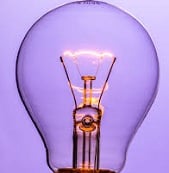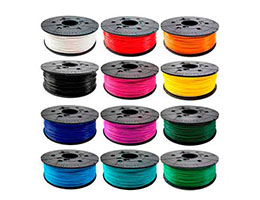 The etymology of filament takes us to the Low Latin filamentum , itself derived from filum (which translates as "thread" ). According to the dictionary developed by the Royal Spanish Academy ( RAE ), a filament is a filiform element that can be rigid or flexible.
The etymology of filament takes us to the Low Latin filamentum , itself derived from filum (which translates as "thread" ). According to the dictionary developed by the Royal Spanish Academy ( RAE ), a filament is a filiform element that can be rigid or flexible.
The adjective filiform, for its part, qualifies that which is thread-shaped . It can be said, therefore, that a filament is a thread. There are filaments in various areas and with very diverse characteristics.
The spiral thread found inside a lamp , light bulb or bulb is called filament. When the lamp is turned on, the filament heats up and becomes incandescent, generating light . These filaments are usually made from tungsten and then coated with magnesium and calcium.
Another name by which tungsten is known is tungsten , and it is a chemical element whose atomic number is 74 and is located in group 6 of the periodic table. The filament must heat the argon gas (another chemical element, in this case with the atomic number 18) found inside the incandescent lamps to make them light up.
In the field of botany, the sector of the stamen of a flower that is responsible for holding the anther is called a filament. Let us remember that the stamen is the male organ of flowers: it is a transformed leaf that contains the anther (a sac where pollen is made and stored). This part is supported from its base by the filament known as the stamen.
Biology also uses the idea of a filament, in this case to refer to a component of the cytoskeleton (the structure found inside a cell). In this framework of eukaryotic cells, it is possible to recognize actin filaments (a protein), intermediate filaments (groups of other fibrous proteins), microtubules (tube-shaped sectors) and septins.
 With the reduction in manufacturing costs of 3D printers, some companies decided to market more accessible models, and this led to many people starting to print their own creations without leaving their homes, either for their own use or to sell them. Thanks to these machines it is possible to print static or functional products, to cover a wide range of needs. The raw material used in these cases is called filament , and it is sold in various types.
With the reduction in manufacturing costs of 3D printers, some companies decided to market more accessible models, and this led to many people starting to print their own creations without leaving their homes, either for their own use or to sell them. Thanks to these machines it is possible to print static or functional products, to cover a wide range of needs. The raw material used in these cases is called filament , and it is sold in various types.
The most popular material of all is called PLA , short for polylactic acid . Its success is due to several reasons, the most notable being the ease with which it can be extruded (give shape by pulling on one of the faces of the object). Compared to others, PLA does not require very high temperatures to extrude and does not produce an unpleasant odor while printing.
Another advantage of PLA is that it is more ecological than most alternatives, since it is obtained from renewable resources , such as sugar cane or corn starch. This material is used in the manufacture of many different types of filaments.
Because PLA filaments have such positive properties, it's easier to wonder when not to use them than the opposite. In this sense, it is necessary to point out one of its disadvantages: it is more fragile than the others. For this reason, it is recommended not to use it for printing objects that must be handled a lot, that can fall or bend, such as tools or toys, for example. Another point to keep in mind is that it deforms when it reaches 60 °C, so it is not advisable to print items that are going to be left near heaters or the kitchen.
